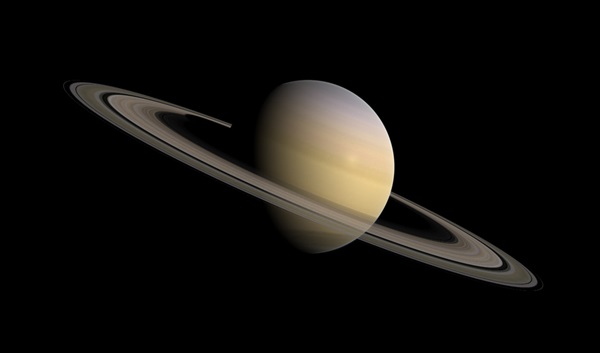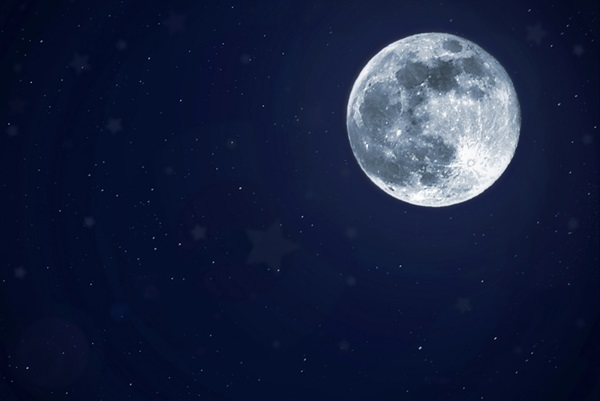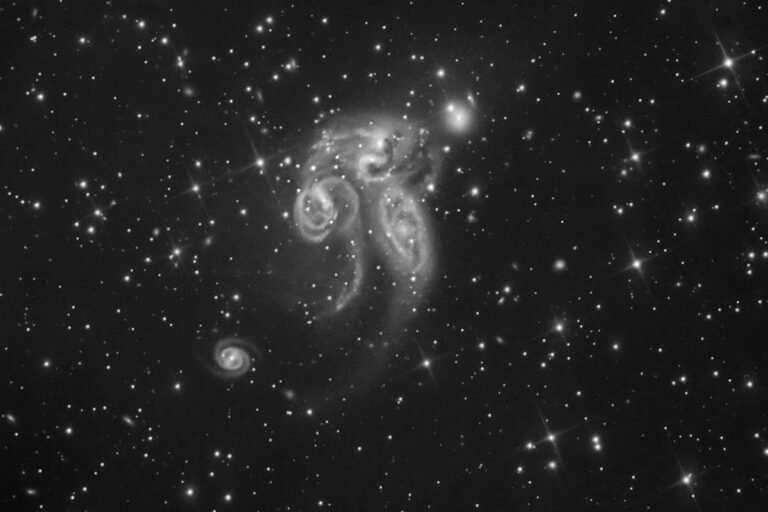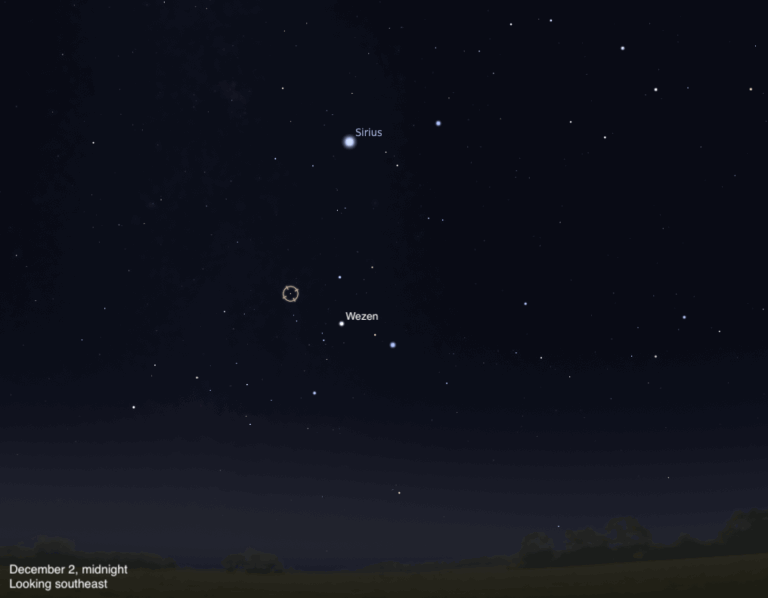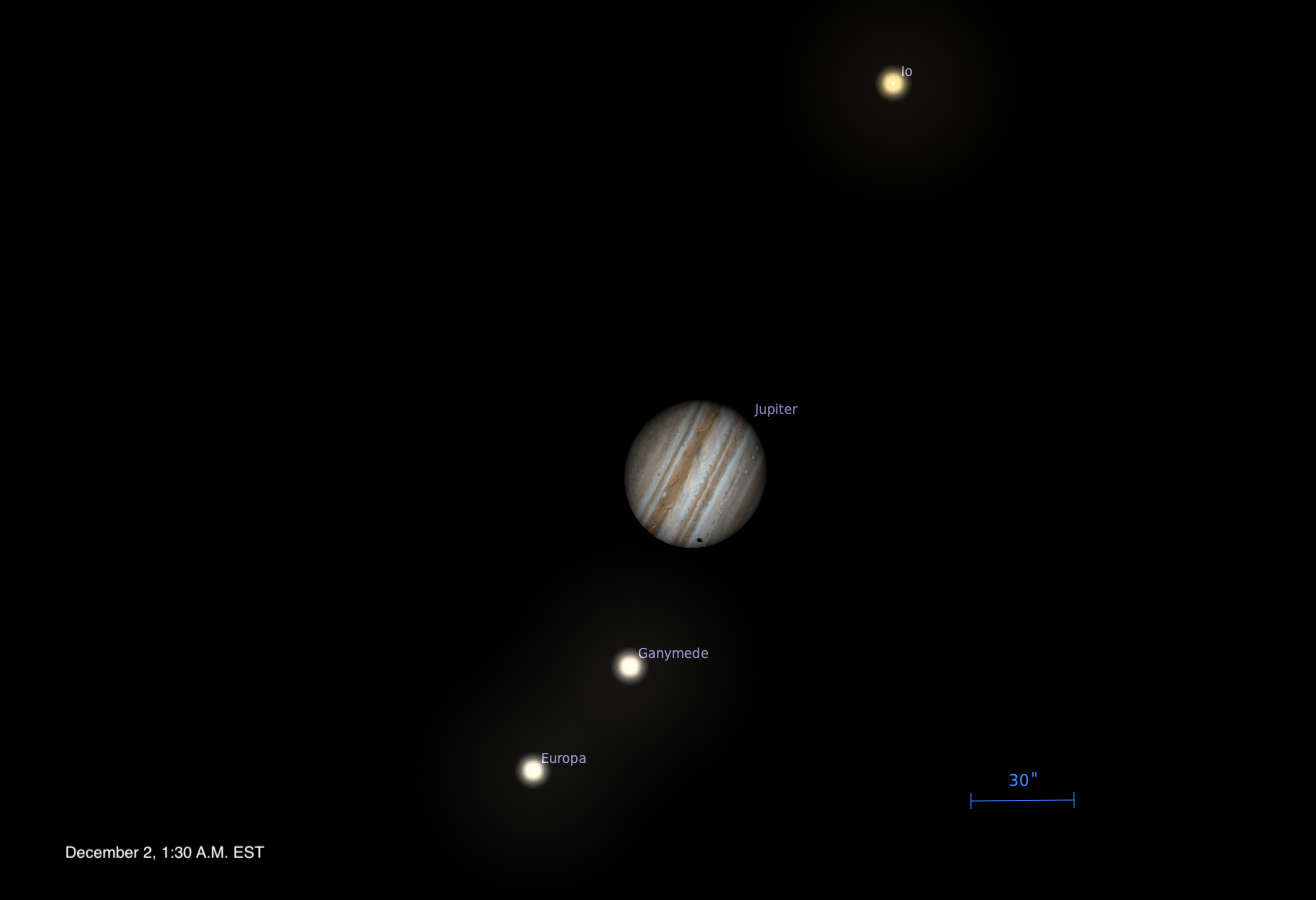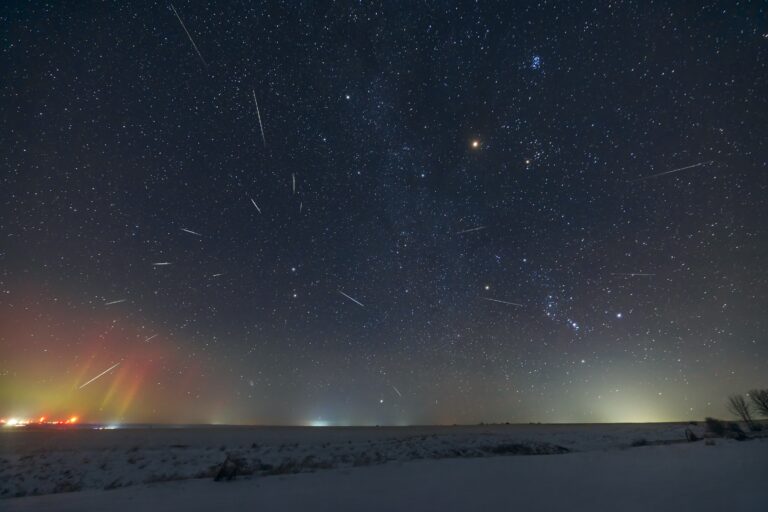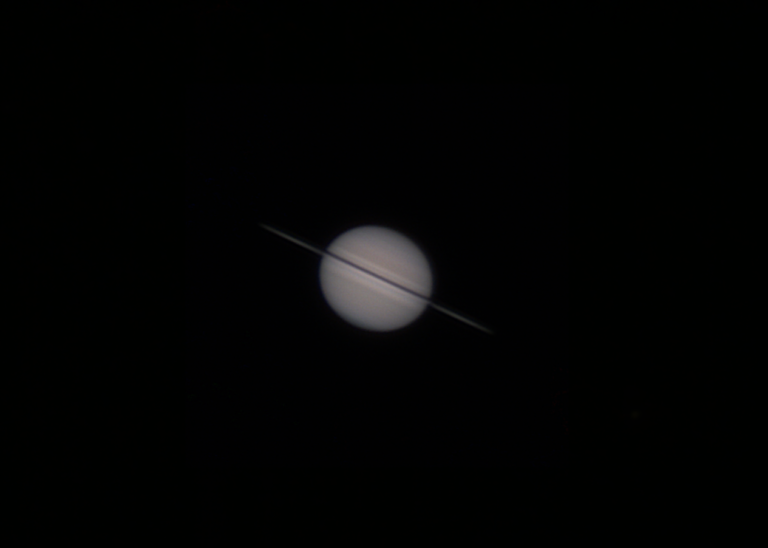Key Takeaways:
Friday, February 24
A pair of fine binocular objects shows up nicely on evenings this week. The open star clusters M46 and M47 reside about a degree apart in the northwestern corner of the constellation Puppis the Stern. The two lie about 12° east-northeast of the night sky’s brightest star, Sirius. The western cluster, M47, glows at 4th magnitude and appears as a fuzzy patch sprinkled with several pinpoint stars. Sixth-magnitude M46 shows up as a hazy collection of faint stars that is hard to resolve under most conditions. Although it contains nearly twice as many stars as M47, M46 appears fainter and fuzzier because it lies some three times farther from Earth.
Saturday, February 25
Asteroid 4 Vesta reached opposition and peak visibility in mid-January, but 2017’s brightest minor planet still shines at magnitude 7.0 and shows up easily through binoculars. To find the minor planet, start at magnitude 1.2 Pollux in northern Gemini and then drop 2.4° southwest to magnitude 4.1 Upsilon (u) Geminorum. Vesta lies 1.5° southwest of Upsilon this evening.
Sunday, February 26
New Moon occurs at 9:58 a.m. EST. At most New Moons, our satellite tracks across the sky with the Sun and remains hidden from view. But today, the alignment between the Moon and Sun is perfect and people in the right locales can view a solar eclipse. Observers across most of South America and southwestern Africa will see the Moon take at least a bite from the Sun. The best views, however, come along a narrow path that runs through southern Chile and Argentina before crossing the Atlantic and reaching the coast of Angola. People there will witness an annular eclipse. The Moon appears slightly smaller than the Sun in the sky, so observers along this central track will see a ring of sunlight surrounding the Moon. Because the eclipse is not total, people will need to use safe solar filters to view it directly.
Mars continues to put on a nice show these February evenings. It appears 25° high in the west once twilight fades to darkness, though it’s easier to find by looking 11° (about 1.5 binocular fields) to the upper left of brilliant Venus. The magnitude 1.3 Red Planet lies among the background stars of Pisces the Fish. Although this is normally a rather unremarkable region, it currently also hosts the distant planet Uranus. Mars passes just 34′ north of its 6th-magnitude neighbor this evening, and the two appear within 1° of each other both yesterday and tomorrow evenings. That’s close enough that both worlds appear within a single low-power telescopic field of view. Mars presents a 4.6″-diameter disk while Uranus, despite lying 10 times farther away, spans 3.4″. Neither object shows any detail, bit the ruddy color of Mars contrasts nicely with the blue-green of Uranus.
Monday, February 27
Tonight will be a great time to get to know Lepus the Hare, one of the sky’s lesser-known constellations. Approximately a dozen medium-bright stars form Lepus, which sits directly below (that is, south of) Orion the Hunter. Lepus is a mid-size constellation. Out of the 88 star patterns that cover the sky, Lepus ranks 51st in size. It covers 290 square degrees, or about 0.7 percent of the sky.
Lepus has two named stars, magnitude 2.6 Arneb (Alpha Leporis) and magnitude 2.9 Nihal (Beta Leporis). The best date to see the constellation (when it lies opposite the Sun in the sky as seen from Earth) is December 14, but because it sits so close to Orion, it’s easy to see throughout the Northern Hemisphere’s winter. Just don’t look for it around June 15 because that’s when the Sun is in Lepus’ part of the sky.
Tuesday, February 28
Head out tomorrow night an hour after sunset and locate Mars. Although the Red Planet shines at magnitude 1.3, it lies low in the western sky. But you’ll have some help. Look for the reddish point not quite 5° northwest of the waxing crescent Moon. At the time, our lone natural satellite will appear 15 percent illuminated.
Wednesday, March 1
As I write this, I don’t know if March will come in like a lion or a lamb, but if your sky is clear you can spot the celestial lion tonight. Look toward the east for the constellation Leo the Lion. The easiest way to find it is to first find the Big Dipper, which tonight stands high in the northeast. Just poke a virtual hole in the Dipper’s bowl and follow the water as it runs out. You might hear a mighty roar as the water falls on Leo’s back. Now that you’re in the general area, search for a backward question mark with a bright star as its bottom. The question mark’s curve is the Lion’s head and mane. The bright blue star is Regulus, also known as Alpha Leonis. It marks Leo’s heart. The rest of the constellation lies to the east of the question mark. Look for a triangle of stars with bright Denebola (Beta Leonis) marking the tip of Leo’s tail.
Thursday, March 2
One of the greatest of all telescope targets — Saturn — rises in the southeast tomorrow morning around 2:30 a.m. local time. The ringed world resides in the constellation Sagittarius the Archer near that star pattern’s border with Ophiuchus the Serpent-bearer. It now shines at magnitude 0.5. Use a magnification of 100x in a 3-inch or larger telescope, and you’ll see Saturn’s magnificent rings tilted 27° to our line of sight. Look for a dark line called the Cassini Division near the rings’ outer edge. This 2,900-mile-wide (4,667km) gap separates the outermost A ring from the brighter B ring. Saturn shows a 16″-diameter disk surrounded by a stunning ring system that spans 36″.
Friday, March 3
The Moon is at perigee, the closest point in its orbit around Earth, at 3 a.m. EST. It will then lie 229,324 miles (369,062 kilometers) away. But because the Moon’s orbit is not circular, its distance from Earth varies by some 13 percent. Still, this morning’s perigee is the second farthest during 2017. The only perigee further will occur in September, when the Moon will lie 798 miles (1,284 km) farther away.
Saturday, March 4
Head outdoors around 10:30 p.m. local time and look for the sky’s fourth-brightest star rising in the east. That’s Arcturus (Alpha Boötis), the luminary in the constellation Boötes the Herdsman. The easiest way to find Arcturus is to first find the Big Dipper, which tonight stands high in the northeast. Note that the Dipper’s handle is curved. Follow that curve downward and you’ll come to Arcturus. Because the handle’s curve is also part of a circle called an arc, use the old phrase, “Follow the arc to Arcturus,” to remember how to locate the orange star.
Sunday, March 5
First Quarter Moon occurs at 6:32 a.m. EST. If you watch carefully, you may see the half-lit orb rising in the northeast just past noon local time. Geometrically, First Quarter means the Sun-Earth-Moon angle equals 90°. When this angle, where Earth always represents the vertex, is 0°, we experience New Moon. That’s when the Moon and the Sun line up. At 180°, the Full Moon lies opposite the Sun as we see it and dominates the night. And when the angle is 270°, the Last Quarter Moon rises at midnight and sets 12 hours later.


